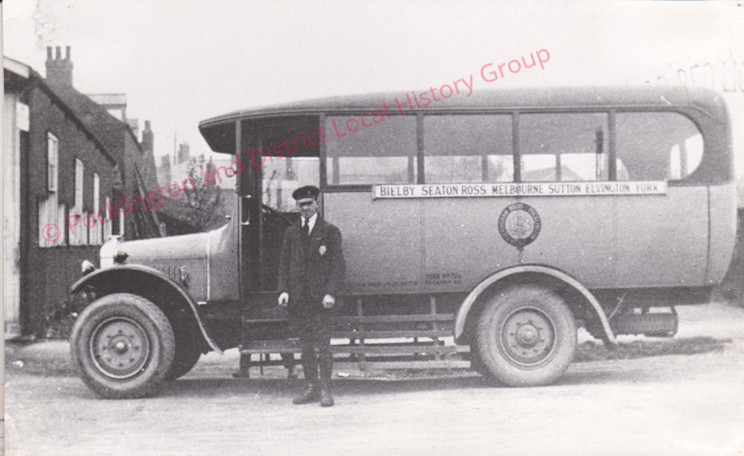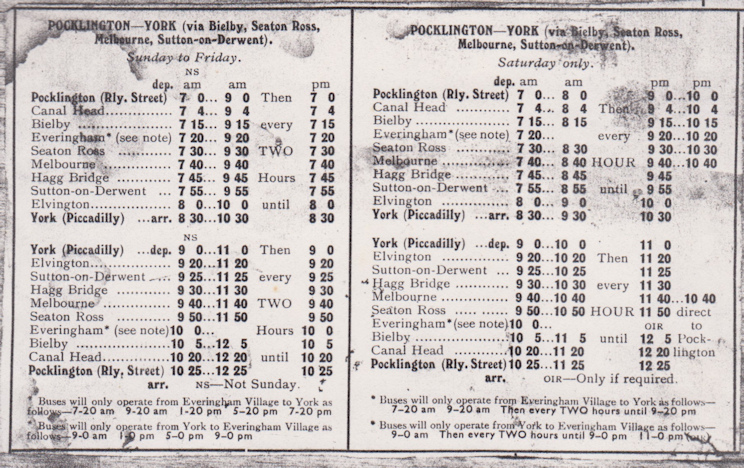 |
|
|
|
|
|
| The following article was supplied by Jane Henley. |
|
|
Seaton Ross bus services written by a pupil at Seaton Ross School in 1936 in their “Our Village” compilation:
"Perhaps one of the greatest improvements to the village of Seaton Ross is the Bus Service. This was originated by Everingham Bros. of Pocklington and was during the past few years, rapidly developed into a well known Bus Service. At first only one bus went to York every Saturday but as time went on, it was decided that a daily bus service would probably pay, so more buses were added and now we have a bus service from Pocklington to York including other neighbouring villages. This is a great advantage to Seaton Ross, for we villagers are able to go to town and to market whenever we wish as there is a bus service every hour on Saturdays and every two hours on week days. In the summer time there are pleasure trips to the sea-side resorts organised by Everingham Bros and these are very much enjoyed, for the passengers are conveyed at a very reasonable price, by big saloons which have every comfort for long journeys. These buses distinguish themselves by having EB placed in a prominent position in the front of the bus. During winter time these letters are illuminated so as to cause no hesitation as to whether the passengers are stopping the right bus or not. This service paid so well that new buses are being built and other routes are taken to Bridlington and by the high road to York. Mr Fentiman of Seaton Ross used to own two buses which he took to York market every Saturday and to Market Weighton every Wednesday, but being unable to compete with the larger bus service, he retired and now has a large taxi which he uses when required. It is often thought how lucky we are to possess such a good bus service, considering that Seaton Ross is such a small village”.


In 1936 in Seaton Ross there were 7 Motor Cars, 7 Transports (trucks) and 9 Motor Cycles. There was a preponderance of bicycles with most villagers having one. The population in the village in 1936 was approximately 350.

|
|
|

